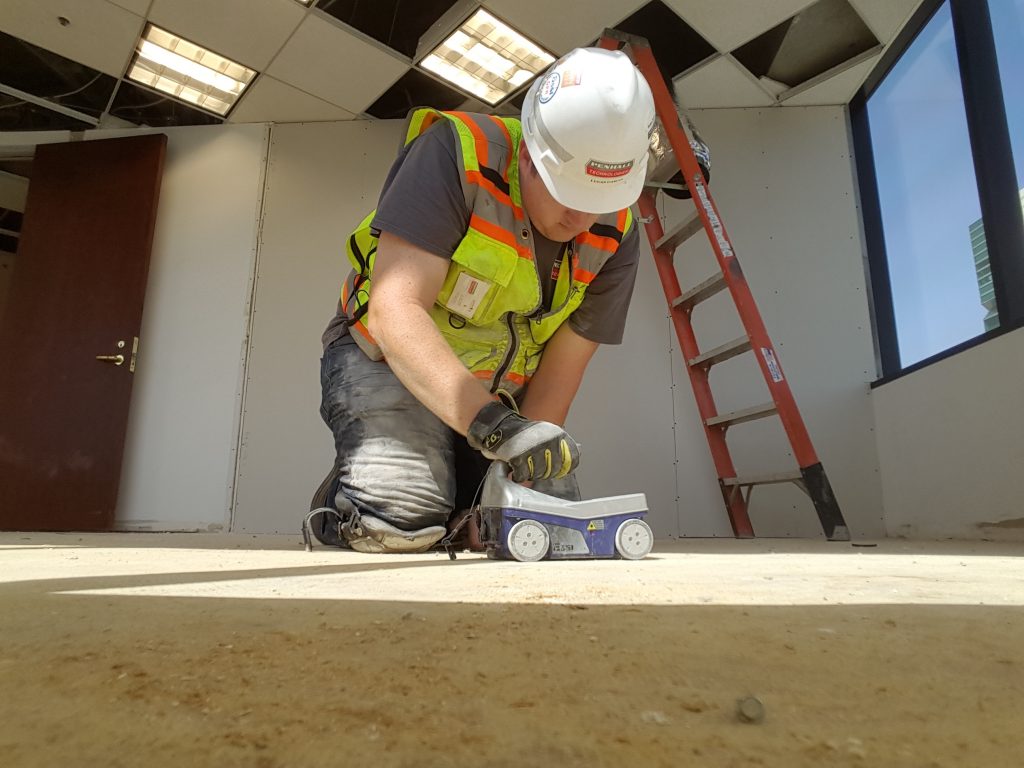Comprehensive Overview to Concrete Scanning Technologies
Comprehensive Overview to Concrete Scanning Technologies
Blog Article
Elevate Your Building And Construction Process With the Strategic Insights of Concrete Scanning for Enhanced Efficiency
One such technology that has changed the building and construction market is concrete scanning. By taking advantage of the tactical understandings given by concrete scanning, building and construction specialists can open a realm of enhanced efficiency and streamlined processes.

Advantages of Concrete Scanning
Enhancing project effectiveness and security, concrete scanning uses a non-destructive technique for finding covert objects within concrete structures. By using innovations such as ground-penetrating radar (GPR) and concrete x-ray imaging, building groups can precisely situate rebar, post-tension cables, electric conduits, and other obstructions prior to drilling, reducing, or coring right into concrete.
The advantages of concrete scanning are many. Building sites can be complex environments, and understanding what lies underneath the surface area can protect against crashes and injuries.
Moreover, concrete scanning advertises overall job performance by improving workflows and avoiding rework. By identifying possible concerns early, groups can adjust their strategies proactively, saving time and resources in the future. Basically, the fostering of concrete scanning innovations is a strategic investment that pays returns in regards to safety, efficiency, and cost-effectiveness.
Technology Integration for Efficiency
Concrete scanning's capability to simplify process and boost project efficiency can be more enhanced with tactical combination of cutting-edge innovations. By including Structure Information Modeling (BIM) software program right into concrete scanning processes, building groups can achieve a greater level of accuracy and coordination. Additionally, the combination of Increased Reality (AR) modern technology with concrete scanning can enhance on-site visualization, allowing job supervisors and employees to overlay digital details onto the physical environment in actual time.
Preventing Expensive Mistakes
Just how can meticulous interest to information throughout concrete scanning procedures assist construction teams in protecting against pricey mistakes? Concrete scanning plays a crucial role in determining prospective problems prior to they escalate right into pricey blunders. By making use of advanced scanning innovations such as Ground Passing Through Radar (GPR) and electro-magnetic induction, building and construction groups can accurately spot rebar, utilities, gaps, and various other blockages within concrete structures. This level of accuracy enables job managers to make informed choices pertaining to the layout and design of their construction strategies, reducing the risk of unintentional damage to vital facilities during the building process. In addition, concrete scanning aids in making sure structural stability by determining weaknesses or issues in the concrete at an early stage, permitting prompt repair work and modifications. By proactively addressing these issues, building teams can stay clear of pricey errors such as rework, delays, or safety threats that might develop from ignored discrepancies in the concrete framework. Inevitably, spending in detailed concrete scanning procedures proves to be a cost-efficient strategy in the future, saving both time and resources while boosting overall task effectiveness and top quality.
Enhancing Task Administration
Thorough focus to detail during concrete scanning processes not only aids in staying clear of costly mistakes but likewise lays a strong structure for efficient job management in building ventures. By including concrete scanning innovation into job administration methods, construction groups can streamline workflows, enhance communication, and make sure that jobs stay on track.
Concrete scanning provides important understandings right into the great post to read architectural stability of existing elements, allowing task managers to make enlightened choices regarding design modifications or building and construction series. This proactive technique reduces the risk of unanticipated delays or revamp, eventually conserving time and resources. Furthermore, the data acquired from concrete scanning can be integrated right into Building Info Modeling (BIM) systems, allowing real-time partnership and sychronisation among various stakeholders.
Additionally, concrete scanning assists project managers recognize prospective dangers or obstacles before they intensify right into bigger issues, promoting a safer workplace for all entailed. With enhanced exposure and accuracy supplied by concrete scanning modern technology, task supervisors can successfully intend, keep an eye on, and carry out construction jobs with higher performance and confidence.
Optimizing Productivity
One key element of making the most of efficiency is via the fostering of concrete scanning innovation. By making use of ground-penetrating radar (GPR) and other scanning methods, construction teams can precisely find rebar, channels, and various other subsurface elements, minimizing the threat of expensive errors and hold-ups during excavation and exploration.
Additionally, accepting Structure Details Modeling (BIM) software program can substantially improve performance by developing thorough 3D versions that improve job visualization and sychronisation among different trades. BIM permits much better clash discovery, enabling problems to be identified and resolved prior to building and construction also begins, saving time and sources in the future.
Implementing a lean building and construction approach, which concentrates on eliminating waste and maximizing efficiency throughout all job stages, is another reliable method for optimizing productivity. By promoting partnership, communication, and continual renovation, building and construction groups can function a lot more cohesively in the direction of achieving task objectives in a structured and productive way.
Verdict
In visit this website conclusion, the strategic implementation of concrete scanning in the building and construction process offers countless benefits, including boosted efficiency, expense savings, improved job management, and boosted efficiency. By integrating this modern technology, building and construction groups can stay clear of pricey errors, streamline their operations, and maximize their total project output. Concrete scanning is a valuable tool that can raise the building process and bring about even more effective and successful end results.

Report this page